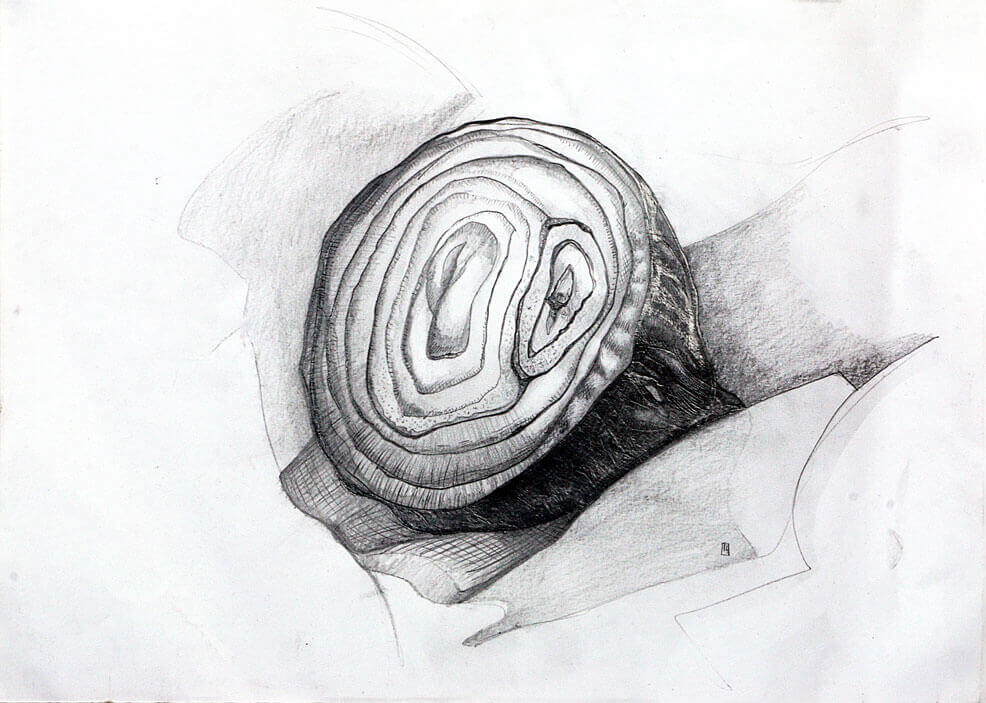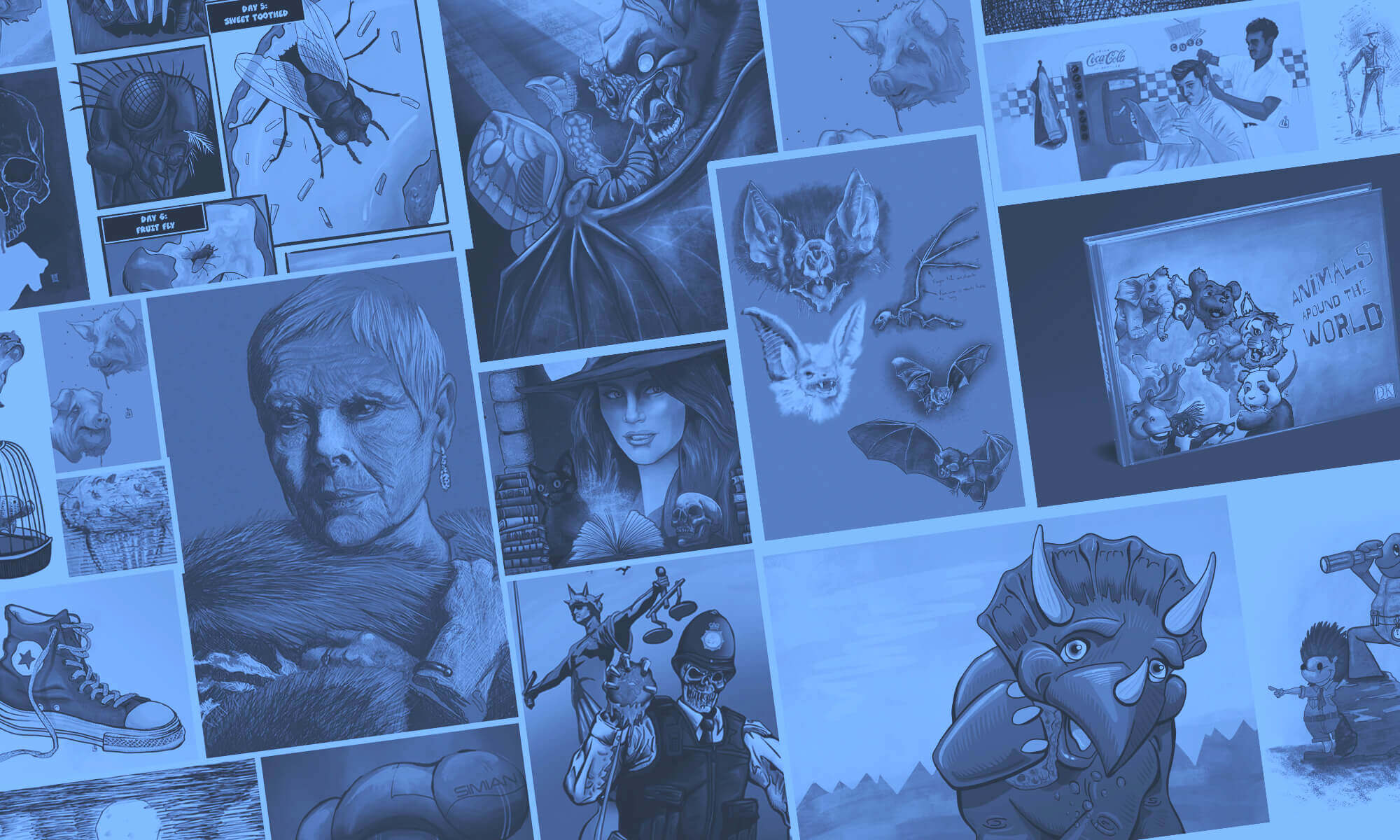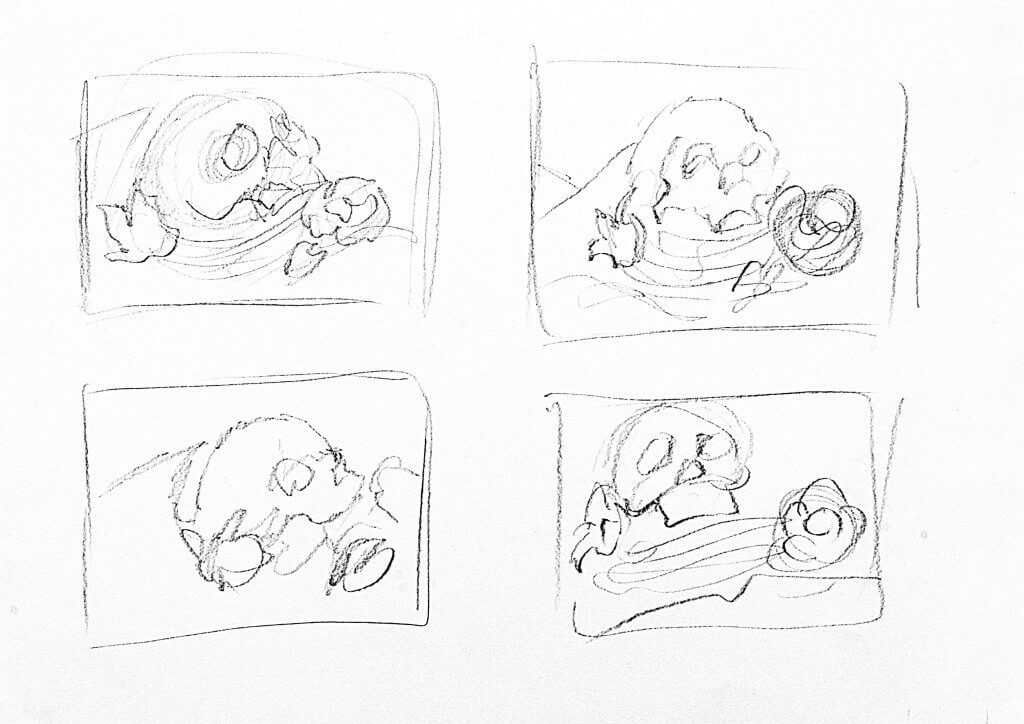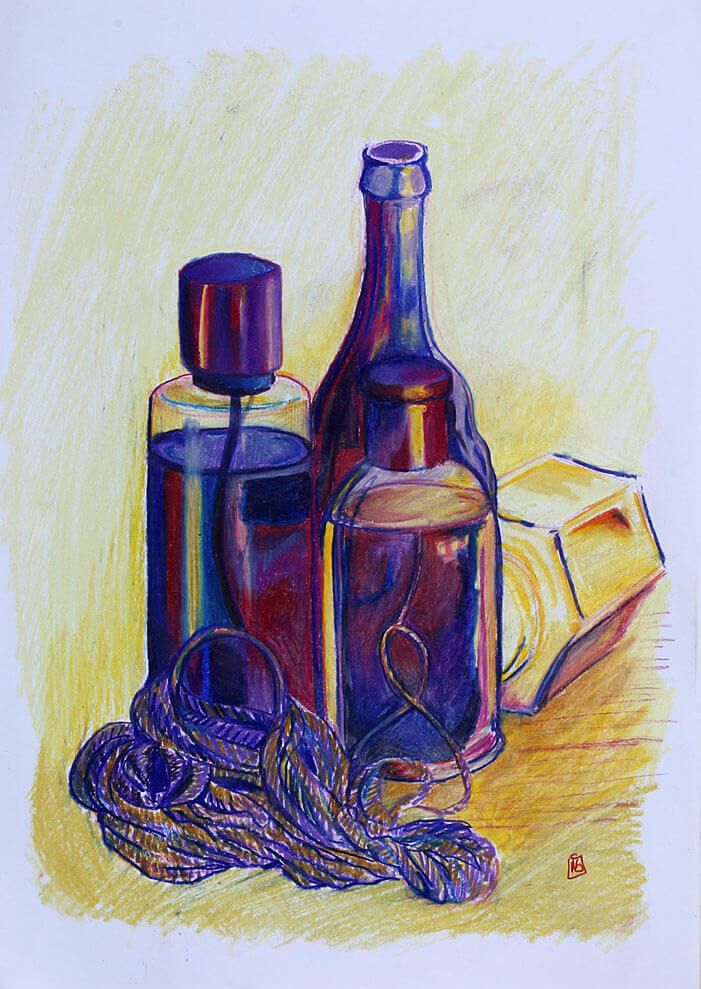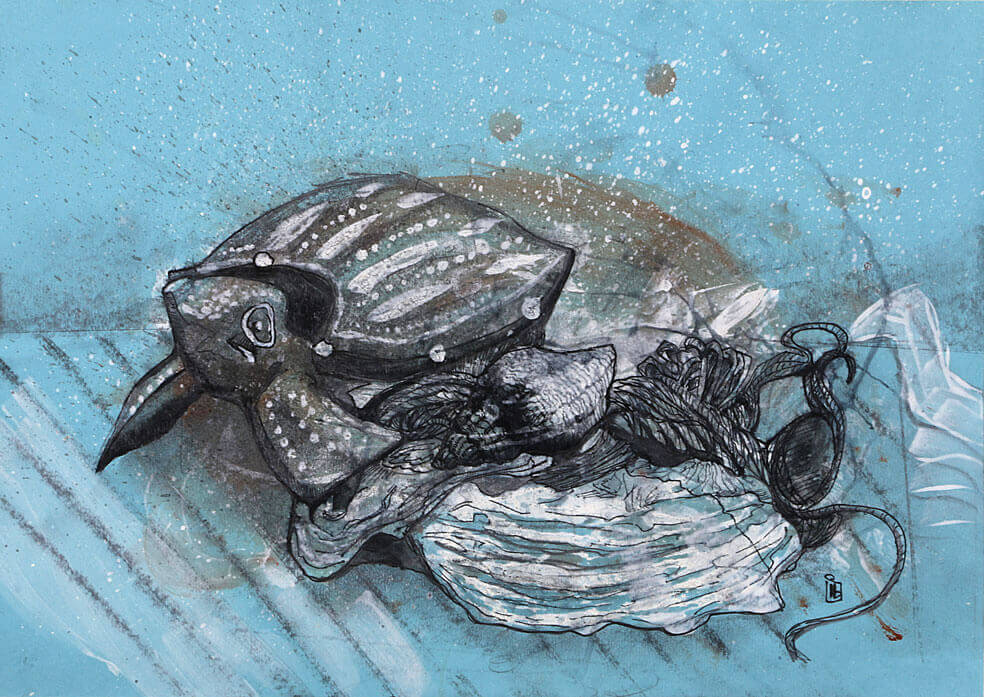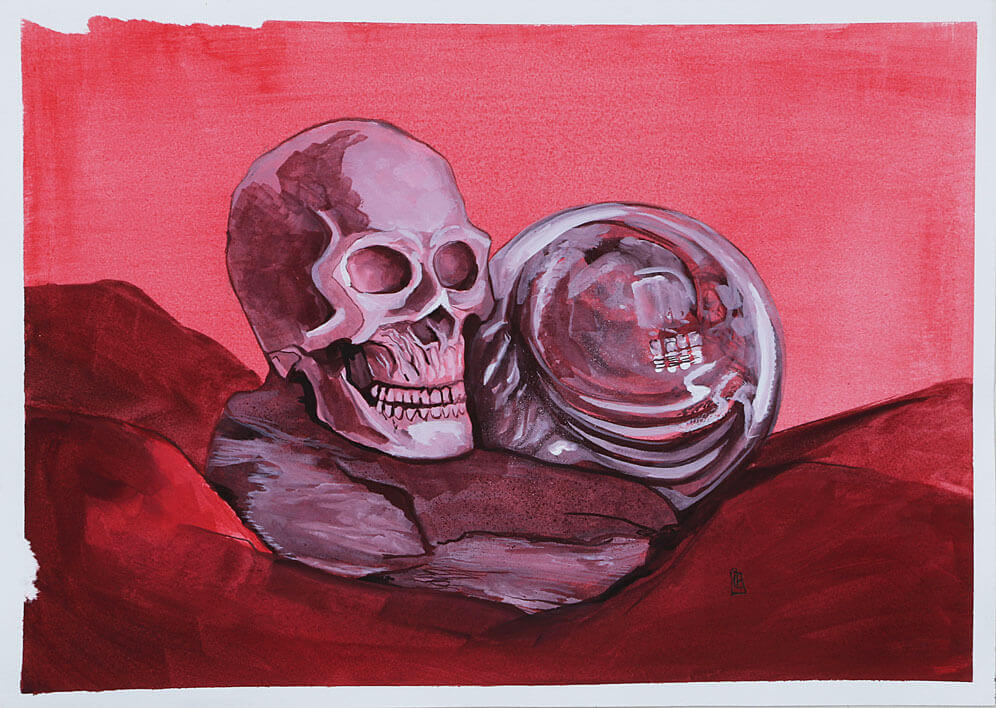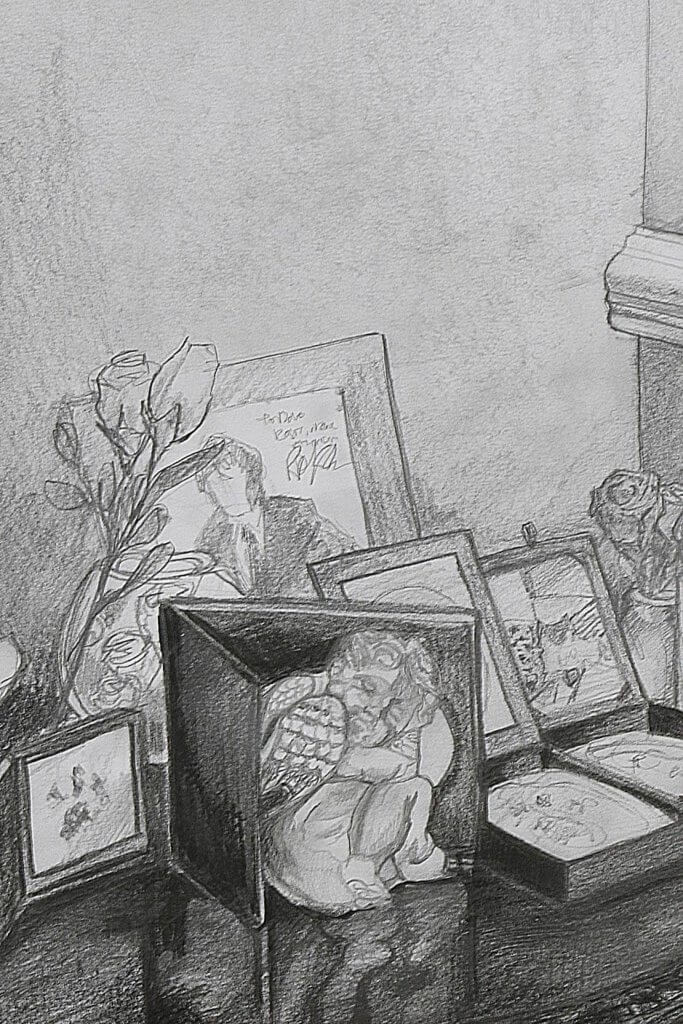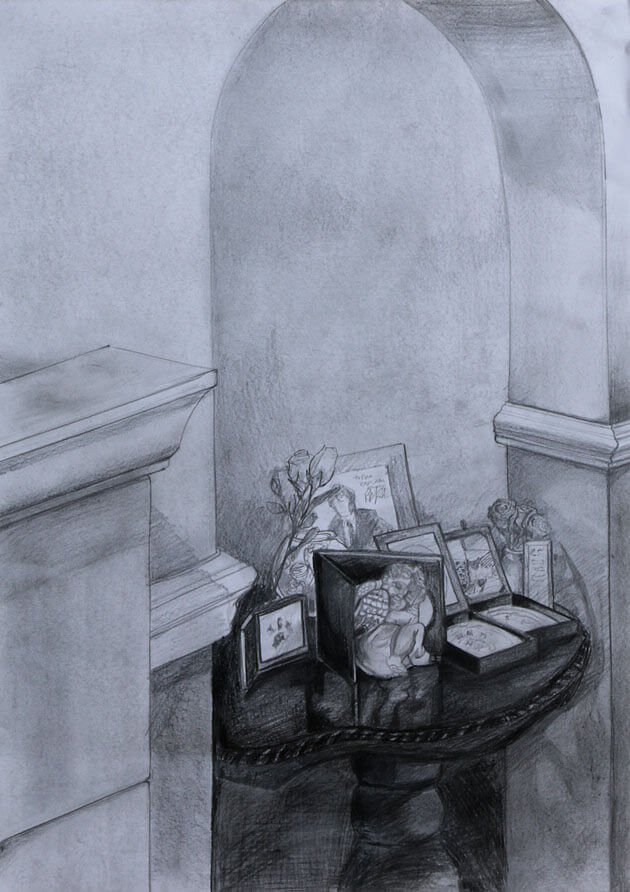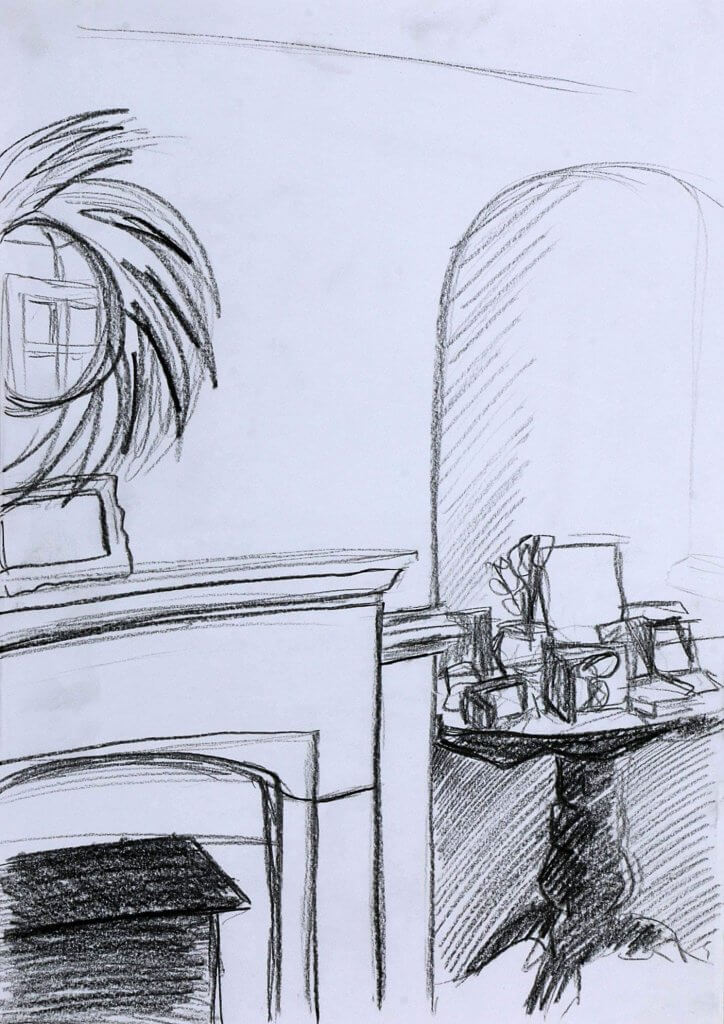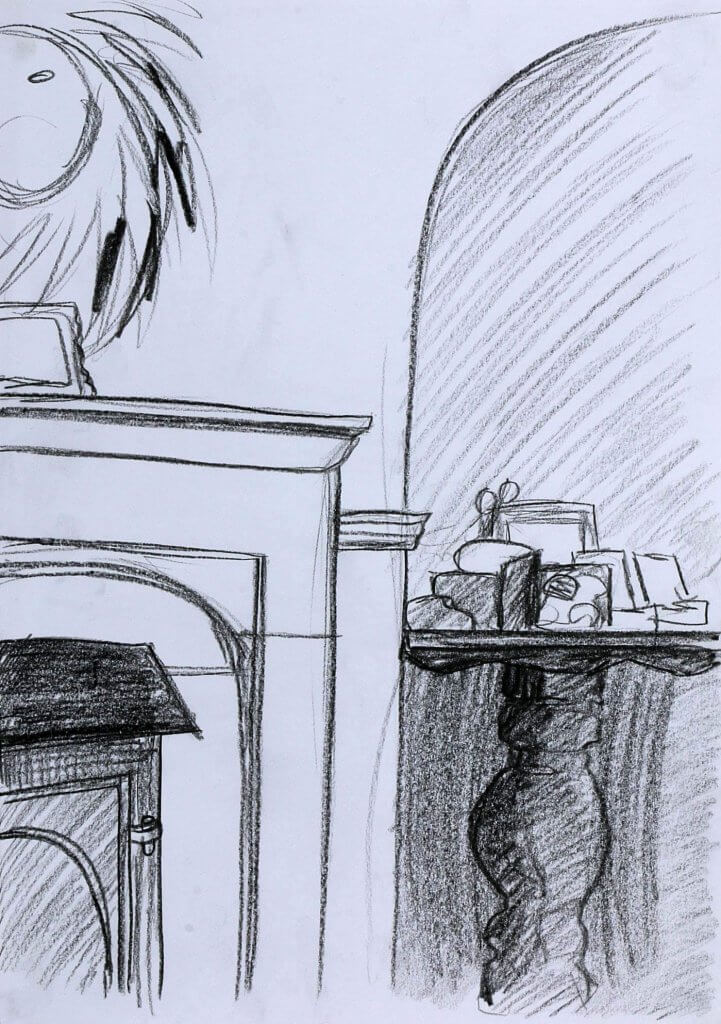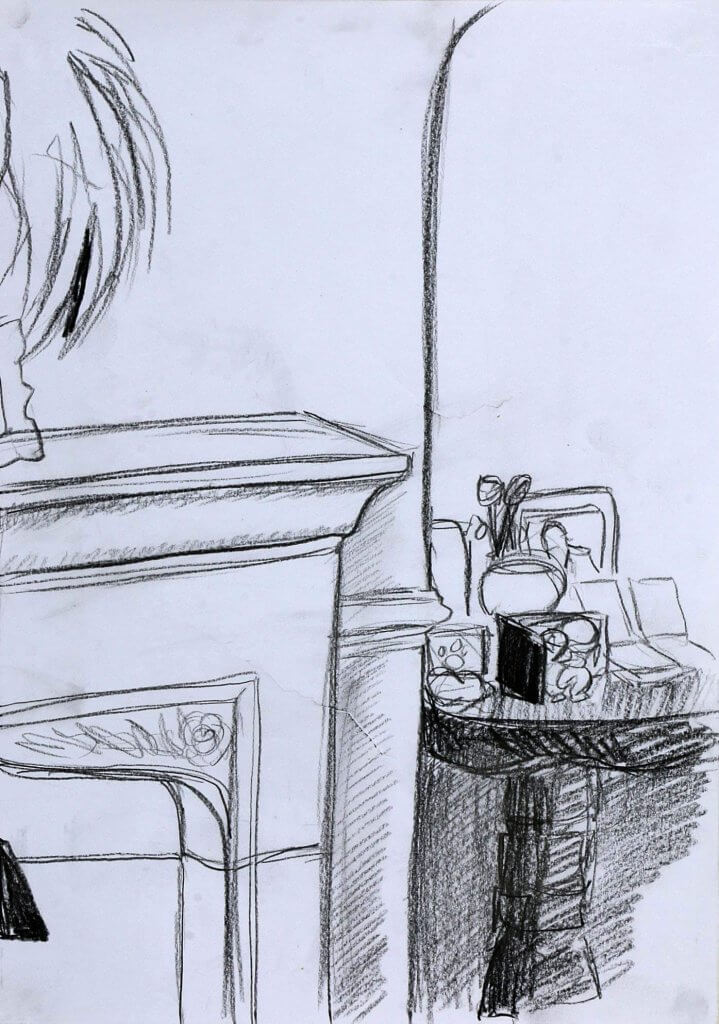This exercise focused mainly on tonal values. I chose half a red onion as it had a really dark exterior and also had a good amount of sheen to it, this partnered with a furrowed texture and a lighter interior would offer good opportunity to explore the visual differences of the onions surfaces. Using graded pencils I went to work sketching out my object. Starting with a HB pencil I worked linearly to establish my shapes and composition, I very lightly started to pull out the contours of the onion, gently following the shape as if I was drawing a grid over the onion, being sure to follow the curves and grooves and trying to establish my darkest blocks of tone.
I switched to a 4H pencil to get some harder lines established, the 4H was nice and sharp and gave a good clear line, I started to mark my contoured lines with more pressure, it really exaggerated the peaks and troughs of the onions outer surface, I wanted to smooth this out a little, I went with the 4H’s opposite and selected the 4B. Gently laying down some tones an interesting thing happened, the hardness of the 4H had given it a coating that seemed to prevent the 4B from covering over, as I tried to apply pressure another interesting effect occurred.
The Hardness of the pencil had left indentations on the paper, the soft 4B gave an almost brass rubbing effect, the 4H feathered lines started to show through retaining a texture but tonally the image was getting darker and more contrasty. The interior of the onion while overall tonally lighter did offer some variation around the layers of onion, using the side of the 4H pencil I very softly added in a smooth gradient, around the ring of each layer, I then sharpened the 4H and added in some directional lines which all painted towards the centre, I wanted to show the roundness of the vegetable and this seemed a good way to do it.
The last steps was to make sure that the image was tonally balanced and sharp, using my three pencils I made a pass with the 4B to make the darkest tones darker, I then made another pass with the 4H and HB to sharpen up any soft areas that the 4B had created. Overall I am happy with the results, I feel I managed to add a good amount of detail and texture to this image as well as varied lines and blocks of contrast to add some visual interest.
Compositionally, the drawing is quite an accurate record, it might have been a little more interesting to crop it closer and really zoom into the fibres of the onions flesh and focus on the wet almost sandy effect it makes when the light hits it. The abstract approach would have also meant it would likely be unidentifiable as an onion so maybe a wider shot could also be investigated as a halfway measure.
